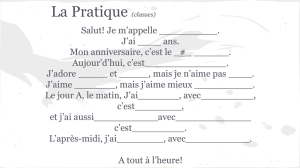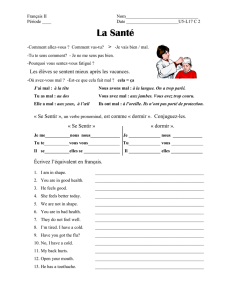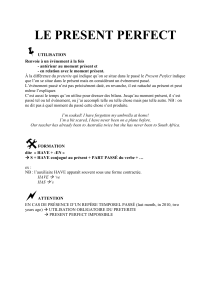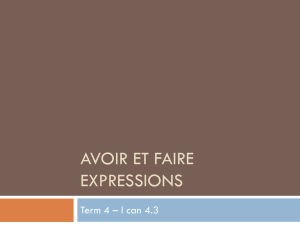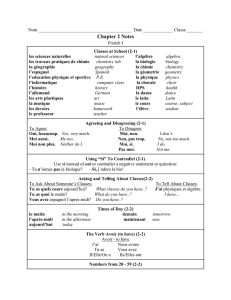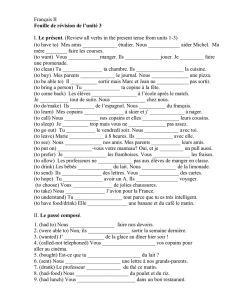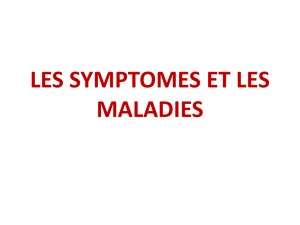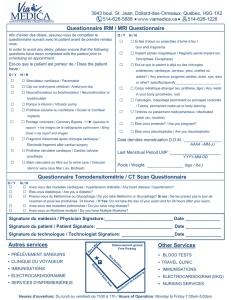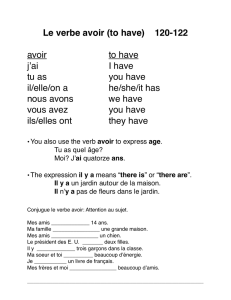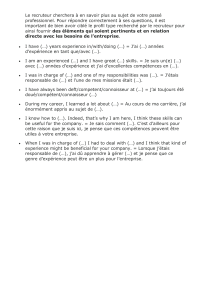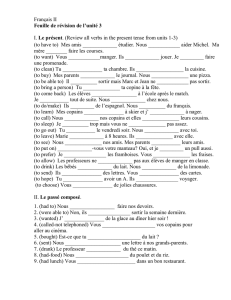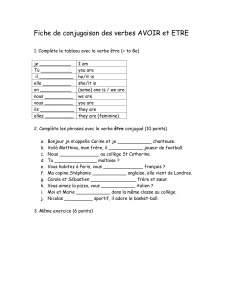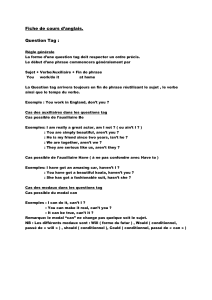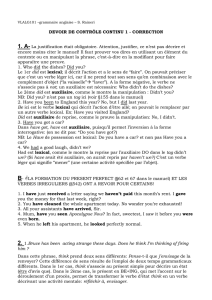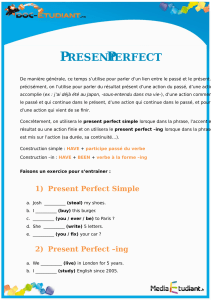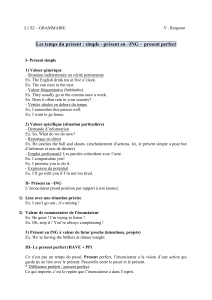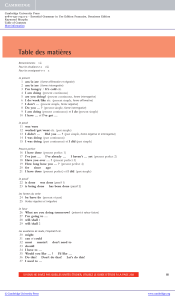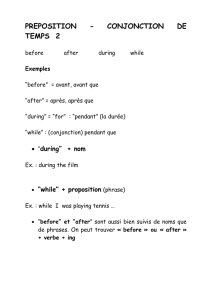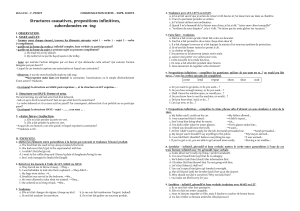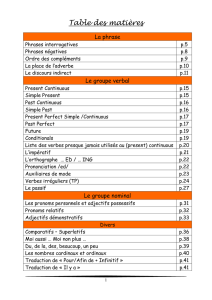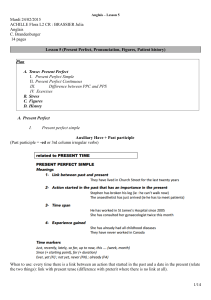groupe SUJET
publicité
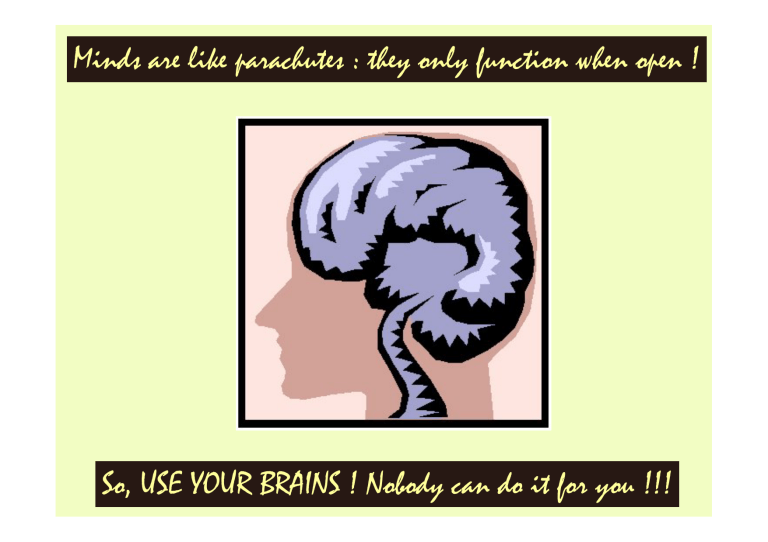
Minds are like parachutes : they only function when open ! So, USE YOUR BRAINS ! Nobody can do it for you !!! Aucun énoncé ne peut exister s’il ne comporte au moins un groupe SUJET et tout ce qu’on en dit – le prédicat – qui vient sous forme de Groupe Verbal avec ou sans ses compléments directs, indirects ou circonstanciels : This document is an ad / a black and white photocopy of an ad It was produced by the CCF, a Swiss charitable N.G.O. They are based in Geneva, Switzerland. On emploie les pronoms personnels dans le but d’éviter toute répétition inutile Ù il faut qu’il existe un rapport logique évident entre le pronom et son référent (ce qu’il remplace, à quoi il réfère) The CCF produced it but we don’t know who made it, or when and where it was published… En Anglais, aucun verbe ne peut apparaître DEVANT un sujet – Inversion – ni s’accoler « n’t », marque de base de négation. Seuls les auxiliaires ont ces capacités : There isn’t any date of publication or medium mentioned, but since the text wasn’t written in French but in English and the currency is the $, we can infer it was published in a US press medium, can’t we ? And since the page number we can see in the bottom right corner is ’67’, we can also think it came from a magazine : newspapers seldom have that many pages, do they? The CCF produced it but we don’t know who made it, or when and where it was published… The CCF is an NGO that is located in Geneva, Switzerland, they aim at helping poor starving kids worldwide. BE Present Preterit MODAL Modalité 1 am was CAN capacité COULD capacité MUST devoir MAY Possibilité (1/2) MIGHT éventualité WILL Vrai futur is are HAVE have were had has WOULD DO do did does Modalité 2 conditionnel Conditionnel SHALL Obligation futur SHOULD Devoir/obligation Conditionnel Æ DO et HAVE peuvent également n’être que Verbes : •I’ll have a piece of cake Æ je prendrai un morceau de gâteau •You didn’t do the shopping this morning, did you ? Æ BE et HAVE permettent de composer des aspects : •You are reading Æ [be + ing] ou aspect progressif / continu Æ votre lecture est en cours, entre début et fin au moment où j’en parle Ù Present continu. •You were watching TV when I came Ù au moment où je suis entré, tu regardais la télé Æ je parle d’une action qui était en cours à un moment précis du passé Ù preterit continu. •You have finished your work Æ [have + participe passé] ou aspect dit ‘parfait’ Æ vous avez fini, terminé votre travail (peu importe quand, seul le résultat compte ici) Æ present perfect. •You hadn’t finished your work when I came in Æ à ce moment précis du passé (preterit simple) tu n’avais pas fini ton travail (qui fut commencé bien avant) Ù past perfect ou plu perfect, correspondant à notre plus-que-parfait. •You have been reading this document for 20 minutes, now Æ tu lis ce document, tu ne l’as pas terminé, bien que ça fasse 20 minutes de lectures Ù present (tu lis) perfect (tu as lu) continu (tu n’as pas fini, donc ta lecture est en cours, non ?) Æ BE permet également de construire le PASSIF, comme en Français : •You are being watched Æ tu es sous surveillance (# on te surveille, déjà depuis un certain temps…)
